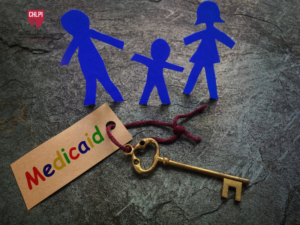This post was written by Caroline Jaschke, an FLPC student in Spring 2021.
This summer I had the opportunity to travel to Delhi, India with the Food Law and Policy Clinic.
During the fall of my 2L year, I worked with the Clinic to research India’s food donation and food safety policies, specifically focusing on India’s newly-proposed date labeling policy. Traveling to India was the perfect culmination not only to my clinic work, but also to my three years of law school. Through our conversations with stakeholders and the friends that we made, I was better able to understand India’s food policy landscape, as well as Indian politics and culture. The trip also provided a behind the scenes look at the policy-making process, as well as a chance to see the real-world impact of the Clinic’s work.
The purpose of our visit was to attend a Global Food Security Summit in advance of the G20, hosted by our partners the Global Foodbanking Network (GFN) and Think Through Consulting (TTC), and reconnect with our partners. The Global Food Security Summit convened current and former government officials, leaders of food donation organizations, policy analysts, scientists, economists, professors, private sector leaders, and many others in a forum about food waste and food security in India. Approximately 40% of food in India goes to waste; meanwhile, hunger and malnutrition is a major issue in the country. Food waste also creates huge economic and environmental burdens. Food recovery, therefore, is a key strategy for reducing food waste and redirecting nutritious food to those in need and was discussed at length during the Summit.
Over the two days of the Summit, we delved into topics such as food banking, policy approaches to address food loss and waste, and creating tri-sector partnerships. India, like most other countries, experiences food loss and waste across the distribution chain from the farm level, to the import level, to the restaurant and consumer level. Several presenters spoke about the importance of preventing food loss at the farm level by providing proper storage and improving distribution infrastructure so food can reach consumers before it spoils. We also heard from two organizations that, prior to the pandemic, were collecting and redistributing excess food from weddings, banquets, and restaurants. During the pandemic, they had to switch their models so that they were purchasing and cooking the food they were distributing, rather than recovering the food. Many of our conversations, both at the Summit and with our partners, centered around how to increase food recovery through building up food bank networks and changing policy to reduce friction for redistribution. In the current system, a lot of safe, nutritious food is being wasted, so the goal is to direct that food to those in need.
At the Summit, Professor Broad Leib presented on the Clinic’s Global Food Donation Policy Atlas project and its findings on India’s food donation and safety laws and policies. The Clinic analyzed and made recommendations for seven policy areas that are particularly important for food recovery and donation. Professor Broad Leib’s presentation highlighted the areas of strength, as well as identified areas of opportunity to strengthen India’s policy landscape. Her presentation was very positively received and there was a lot of excitement and interest around the Clinic’s work. Although the Clinic had worked with its partners in India throughout the research and writing process, the Summit provided an opportunity to receive feedback from a wider audience.
One part of the trip that I particularly enjoyed was the opportunity to witness and participate in the process of developing clinic projects. When I started in the Clinic as a 2L, I had a specific, well-defined issue for which I was researching and making recommendations. During this trip, however, we were grappling with the larger issue of food recovery and donation in India and attempting to distill the issue into bite-size and actionable questions. Our goal was to identify specific policy areas and questions for the Clinic to explore to help our partners advance their policy goals. Essentially, we were trying to determine where we could be most helpful to our partners and where our research and advocacy could be effective in making important policy changes. We had discussions around which policies were politically feasible to push for at this time, which government ministries had the power to enact a particular policy, whether a policy should be advanced through the court system rather than the legislative system, and whether it would be more effective to advance policies on the state or federal level. This process of identification and honing down of the question to a narrow policy issue is essential to policy-making and advancing the larger goal. Participating in this process was an invaluable learning opportunity.
We also got to make site visits to two school feeding programs and a youth-operated organic garden; all supported by the food donation organizations that we work with. Through the support of these organizations, the schools are able to serve meals to their students during their school day, so that they get the proper nutrition and can focus on their classes. One of the school feeding programs provides two meals a day to 1,500 children of all ages. The other serves 500 children a day. The children at the youth-operated garden come on the weekends to work on projects such as irrigation, planting, and harvesting. As part of the garden program, the children also learn about nutritious food. They were very excited to give us a tour of the garden and tell us about the vegetables they grow! Policy work can often feel like it’s done from a bird’s eye view, so it was encouraging to see the on-the ground impact that comes from policies that support food recovery, donation, and distribution.
During our visit, many stakeholders emphasized that food donation is an integral part of the culture in India. For example, while driving down the road to visit one of our partners, we saw a cart distributing food with a line of people waiting. We were told that this was someone distributing food in celebration of something – such as their birthday or a holiday—and that this is quite common. While food donation is an important part of Indian culture, the challenge is how to scale food recovery and donation up to a more systematic and wide-reaching level.
Other highlights of the trip included a meeting with the Confederation of Indian Industry and the Food Safety and Standards Authority of India, hearing the innovative ideas of food donation organizations, a visit to historic Humayun’s Tomb, and delicious Indian food! I also really enjoyed the conversations I got to have with lots of smart, passionate people who brought a wide-range of perspectives to the issue of food security.
All-in-all it was an incredible trip!


